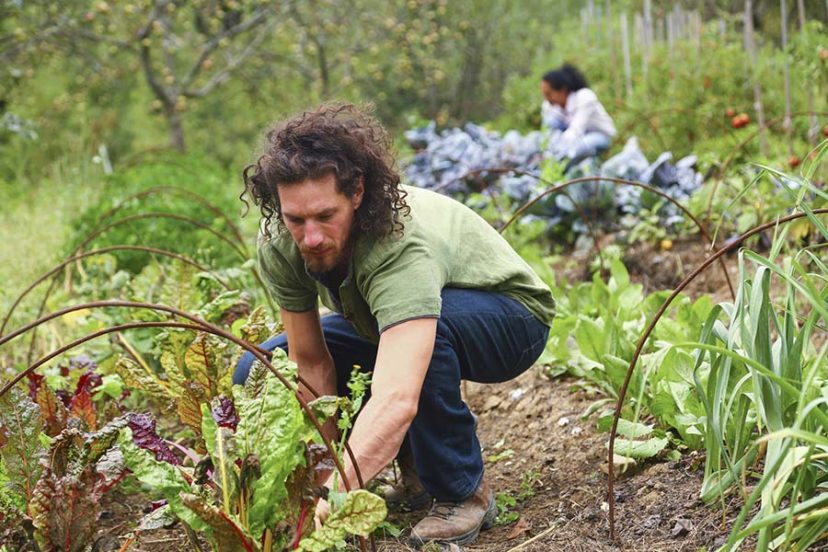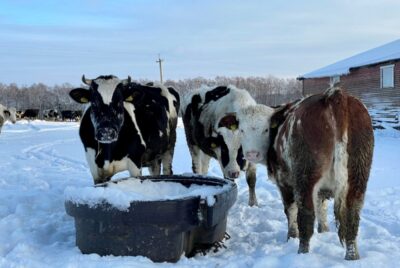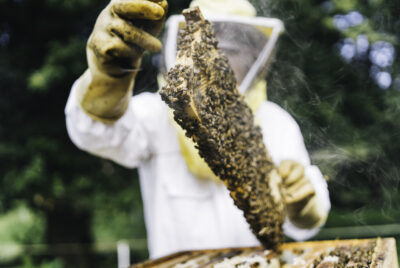Modern Homesteading Ideas – The Top 10
"We may earn a commission from purchases made using our links. Please see disclaimer."
Being an enthusiastic advocate of modern homesteading, I believe that embracing a self-sufficient lifestyle can bring numerous benefits to individuals and the environment. In this article, I will delve into the concept of modern homesteading and present the top 10 ideas that can help you embark on this rewarding journey. From urban gardening to sustainable living practices, each idea offers a unique opportunity to reconnect with nature, reduce your ecological footprint, and create a more sustainable future.
Understanding Modern Homesteading
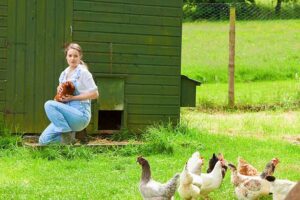 Before we dive into the specific ideas, let’s first establish a clear understanding of modern homesteading. Modern homesteading is a way of life that combines traditional skills and values with modern technologies to achieve self-reliance. It emphasizes sustainable living, self-sufficiency, and a close connection to the land. By adopting this lifestyle, individuals seek to reduce their dependency on external systems, embrace sustainable practices, and promote a healthier and more fulfilling way of living.
Before we dive into the specific ideas, let’s first establish a clear understanding of modern homesteading. Modern homesteading is a way of life that combines traditional skills and values with modern technologies to achieve self-reliance. It emphasizes sustainable living, self-sufficiency, and a close connection to the land. By adopting this lifestyle, individuals seek to reduce their dependency on external systems, embrace sustainable practices, and promote a healthier and more fulfilling way of living.
While rural homesteading involves acreage and livestock, urban homesteading adapts the concepts for city dwellers. Homesteading skills like gardening, food preservation, and DIY projects cultivate feelings of capability, usefulness, and independence. The homesteading community shares knowledge, resources and moral support to empower beginners. By taking responsibility for providing for more of their own needs, homesteaders greatly increase their self-determination. The homesteading mindset values resilience, practicality, creativity, and community.
Benefits of Modern Homesteading
Modern homesteading offers a plethora of benefits that make it an attractive choice for individuals seeking a more fulfilling and sustainable lifestyle. Some of the key benefits include:
- Self-Sufficiency: By growing your own food, raising livestock, and producing your own energy, you become less reliant on external sources and gain a greater sense of self-sufficiency.
- Health and Well-being: Engaging in physical activities such as gardening and animal care can promote better health and well-being. Consuming fresh, organic produce and reducing exposure to harmful chemicals further enhances your overall well-being.
- Environmental Impact: Modern homesteading encourages eco-friendly practices such as composting, rainwater harvesting, and renewable energy generation. These actions contribute to reducing your ecological footprint and preserving the environment.
- Financial Savings: By producing your own food, energy, and household products, you can significantly reduce your monthly expenses and save money in the long run.
Top 10 Modern Homesteading Ideas
Now, let’s explore the top 10 modern homesteading ideas that you can incorporate into your lifestyle:
#1 Urban Gardening
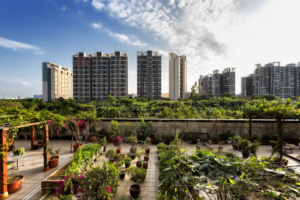 Even with limited space, you can transform your urban dwelling into a green oasis. Utilize containers, vertical gardening techniques, and raised beds to grow your own vegetables, fruits, and herbs. Urban gardening, also known as Urban Homesteading, allows you to have a fresh and organic food source right at your doorstep or balcony.
Even with limited space, you can transform your urban dwelling into a green oasis. Utilize containers, vertical gardening techniques, and raised beds to grow your own vegetables, fruits, and herbs. Urban gardening, also known as Urban Homesteading, allows you to have a fresh and organic food source right at your doorstep or balcony.
Growing food in an urban setting allows you to reduce your carbon footprint by purchasing less produce that has been shipped long distances. Urban gardens encourage community building as you share gardening tips and excess produce with neighbors.
When grown in properly amended soil, urban gardens can produce impressive yields without synthetic chemicals. Community gardens allow urban residents without private outdoor space to participate in food production.
#2 Hydroponics and Vertical Farming
 Hydroponics and vertical farming are innovative techniques that maximize space and resources. With hydroponics, plants are grown in nutrient-rich water without soil, while vertical farming utilizes stacked layers to grow crops vertically. These methods offer high yields and conserve water, making them ideal for modern homesteaders.
Hydroponics and vertical farming are innovative techniques that maximize space and resources. With hydroponics, plants are grown in nutrient-rich water without soil, while vertical farming utilizes stacked layers to grow crops vertically. These methods offer high yields and conserve water, making them ideal for modern homesteaders.
Hydroponic and vertical farming systems allow year-round local food production unaffected by weather or season. The controlled environments of these systems produce higher and more consistent yields compared to traditional farming.
Hydroponic systems can be set up in small spaces like garages or basements for fresh greens throughout winter. Vertical farming presents opportunities for sustainable urban agriculture in vacant buildings.
#3 Backyard Poultry
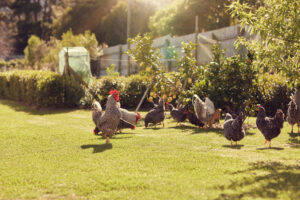 Raising backyard poultry not only provides a sustainable source of eggs and meat but also offers a unique connection with nature. Chickens, ducks, or quails can be raised in small spaces, providing fresh and nutritious eggs while helping control pests in your garden.
Raising backyard poultry not only provides a sustainable source of eggs and meat but also offers a unique connection with nature. Chickens, ducks, or quails can be raised in small spaces, providing fresh and nutritious eggs while helping control pests in your garden.
Caring for a small backyard flock teaches children valuable lessons about animal husbandry and the food cycle. The small investment needed for basic coop and fencing makes backyard poultry an accessible livestock option.
Letting poultry range freely in your yard significantly reduces pest bug populations without chemicals. Collecting and composting chicken manure provides an excellent organic nutrient source for gardens.
Check out How To Create A Safe Environment For Raising Chickens In Your Backyard (Or Ducks!) for additional information on backyard poultry.
#4 Modern Homesteading Beekeeping
 Beekeeping is an essential practice for modern homesteaders, as bees play a crucial role in pollination. By setting up beehives in your backyard, you not only contribute to the preservation of bees but also enjoy the benefits of fresh honey and beeswax.
Beekeeping is an essential practice for modern homesteaders, as bees play a crucial role in pollination. By setting up beehives in your backyard, you not only contribute to the preservation of bees but also enjoy the benefits of fresh honey and beeswax.
Urban beekeeping allows you to help counter declining bee populations that are essential for food crop pollination. Extracting honey from a backyard hive provides a precious local and organic sweetener.
Watching bees leave and return to the hive demonstrates the industry and interconnectedness of nature. Keeping bees fosters an intimate relationship with an ecosystem essential for one third of food production.
#5 Rainwater Harvesting
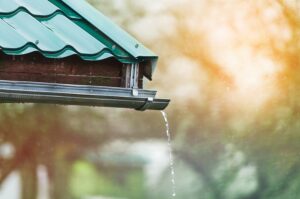 Collecting rainwater allows you to conserve water and reduce your reliance on municipal sources. Install rain barrels or cisterns to capture rainwater from your roof, which can then be used for watering your plants, cleaning, or other non-potable purposes.
Collecting rainwater allows you to conserve water and reduce your reliance on municipal sources. Install rain barrels or cisterns to capture rainwater from your roof, which can then be used for watering your plants, cleaning, or other non-potable purposes.
Rainwater harvesting systems significantly reduce demands on public water infrastructure and aquifers.
Captured rainwater contains no chlorine, fluoride, or other chemicals found in city water supplies.
Funneling rainwater into garden beds allows deep watering of plant roots without waste from evaporation. Storing rainwater offsets rising water utility costs while promoting self-reliance.
#6 Solar Power and Alternative Energy Sources
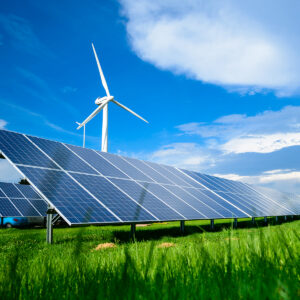 Harnessing solar power and other alternative energy sources like wind or hydroelectricity can help you generate clean and renewable energy for your homestead. Install solar panels, wind turbines, or micro-hydro systems to reduce your reliance on the grid and lower your carbon footprint.
Harnessing solar power and other alternative energy sources like wind or hydroelectricity can help you generate clean and renewable energy for your homestead. Install solar panels, wind turbines, or micro-hydro systems to reduce your reliance on the grid and lower your carbon footprint.
Alternative energy systems allow independence from unreliable electric grids prone to weather disruptions. Solar panels and wind turbines can eliminate electricity bills while reducing your environmental impact.
Small-scale residential solar installations qualify for tax credits and other financial incentives. Connecting alternative power systems to battery banks provides off-grid energy reserves.
#7 Modern Homesteading Composting
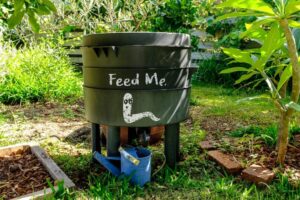 Composting is a valuable practice for modern homesteaders to reduce food waste and create nutrient-rich soil. Utilize kitchen scraps, yard waste, and other organic materials to create compost that enriches your garden and reduces the need for chemical fertilizers.
Composting is a valuable practice for modern homesteaders to reduce food waste and create nutrient-rich soil. Utilize kitchen scraps, yard waste, and other organic materials to create compost that enriches your garden and reduces the need for chemical fertilizers.
Turning food scraps and yard waste into compost completes the cycle of nourishing the soil that nourishes your plants.
Making your own compost allows you to avoid purchasing synthetic fertilizers.
Composting improves soil texture and water retention while reducing erosion. Regular compost applications eliminate the need for harsh chemical pesticides and herbicides.
#8 Food Preservation
 Preserving excess produce through canning, freezing, dehydrating, or fermenting allows you to enjoy your homegrown food throughout the year. Food preservation not only reduces food waste but also ensures a supply of nutritious food even during the off-season.
Preserving excess produce through canning, freezing, dehydrating, or fermenting allows you to enjoy your homegrown food throughout the year. Food preservation not only reduces food waste but also ensures a supply of nutritious food even during the off-season.
Preserving seasonal abundance helps create a year-round local food source immune from disruptions of long-distance shipping. Learning traditional methods like canning, curing, and fermenting preserves valuable food knowledge and self-reliance.
Canning and fermenting produce boosts probiotics and enhances nutritional content. Storing preserved foods in a basement or cellar eliminates dependence on electricity for refrigeration.
#9 DIY Home Products
 Create your own household products such as cleaning agents, personal care items, and candles using natural ingredients. By making these products at home, you reduce exposure to harmful chemicals, save money, and contribute to a healthier living environment.
Create your own household products such as cleaning agents, personal care items, and candles using natural ingredients. By making these products at home, you reduce exposure to harmful chemicals, save money, and contribute to a healthier living environment.
DIY homecare products allow you to control exactly what ingredients your family is exposed to in their living space.
Making your own cleaners and toiletries at home often costs a fraction of what pre-made versions do.
Simple ingredients like vinegar, baking soda, and lemon eliminate the need for toxic chemical cleaners. Learning to make your own beauty products allows you to avoid harmful parabens and preservatives.
#10 Sustainable Living Practices
 Incorporate sustainable living practices into your daily routine. This can include reducing waste, recycling, using eco-friendly products, conserving energy and water, and supporting local and ethical businesses. Small changes in your lifestyle can make a significant impact on the environment.
Incorporate sustainable living practices into your daily routine. This can include reducing waste, recycling, using eco-friendly products, conserving energy and water, and supporting local and ethical businesses. Small changes in your lifestyle can make a significant impact on the environment.
Adopting sustainability practices improves your health and wellbeing by reducing toxins and encouraging community. Even small efforts to live sustainably can have ripple effects that benefit the planet.
Seeking out fair trade and sustainably sourced foods and goods supports ecological balance globally. Cutting back on consumerism and materialism is a positive step toward environmental stewardship.
Conclusion
Modern homesteading is a rewarding lifestyle that enables individuals to reconnect with nature, promote sustainability, and achieve self-sufficiency. By implementing the top 10 modern homesteading ideas discussed in this article, you can take meaningful steps toward a more sustainable future. Embrace the power of urban gardening, alternative energy sources, backyard poultry, and more to create a harmonious and self-sufficient homestead.
The journey of modern homesteading empowers individuals and families to become active producers rather than just consumers. Taking part in even a few of these homesteading practices leads to a more purposeful and self-determined life. Adopting a homesteading mindset creates resilience, nurtures community connections, and builds invaluable skill sets. With some creativity and commitment, aspects of modern homesteading can be incorporated into many different living situations. The climate crisis demands creative grassroots efforts like modern homesteading to build local sustainability and self-reliance.
FAQs
Q1: Is modern homesteading only suitable for people living in rural areas?
A1: No, modern homesteading can be embraced by individuals living in both urban and rural areas. While rural areas may offer more space for traditional homesteading activities, urban dwellers can practice modern homesteading through innovative techniques like urban gardening, hydroponics, and vertical farming.
Q2: How much space is required for urban gardening?
A2: Urban gardening is flexible and can be adapted to various space constraints. Even small balconies or windowsills can be utilized for container gardening. If you have a backyard, you can set up raised beds or utilize vertical gardening techniques to maximize space and grow a variety of crops.
Q3: Are there any legal restrictions on backyard poultry?
A3: Yes, there might be local regulations or homeowner association rules that govern the keeping of backyard poultry. It’s important to check with your local authorities to understand any restrictions or requirements regarding the number of birds allowed, coop specifications, and noise regulations.
Q4: What are the initial costs involved in setting up solar power systems?
A4: The cost of setting up solar power systems can vary depending on factors such as the size of the system, the region you’re located in, and the specific equipment chosen. While the initial investment might be higher, solar power systems can provide long-term cost savings through reduced electricity bills and potential incentives or tax credits offered by governments or utility companies.
Q5: Can I practice modern homesteading on a part-time basis?
A5: Yes, modern homesteading can be pursued on a part-time basis, especially if you have other commitments such as a full-time job. Start by incorporating one or two homesteading practices that align with your interests and available time. Gradually expand your activities as you gain experience and find a balance between your homesteading endeavors and other responsibilities.

